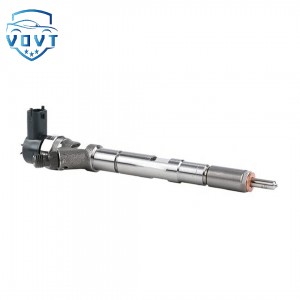Good Quality New Injector BC3Q-9K546-AD Engine Parts for Ford Car Accessories
Products Description
| Reference. Codes | BC3Q-9K546-AD |
| Application | / |
| MOQ | 4 PCS |
| Certification | ISO9001 |
| Place of Origin | China |
| Packaging | Neutral packing |
| Quality Control | 100% tested before shipment |
| Lead time | 7~10 working days |
| Payment | T/T, L/C, Paypal, Western Union, MoneyGram or as your requirement |
Pump Repair Method
1. Repair of increased tooth top clearance
The increase in clearance is often caused by the increase in clearance between the shaft and the sleeve hole, so the clearance should be restored after repairing the fit of the shaft and the sleeve. If the wear of the pump cavity is not serious, the bearing alloy can be welded on the tooth top, and then turned according to the needs of the fit. If the pump cavity is also severely worn, the sleeve method is adopted for repair. The method is: boring the pump cavity wall, and turning a semicircular bushing with a thickness of 3 to 4 mm according to the size of the pump cavity with steel or copper. After the sleeve is lowered into the pump cavity, it is clamped with a clamp, and then welded along the entire width of the bushing at both ends, and slowly cooled in the sand box after welding. Finally, the pump cavity is bored to the standard size, and its taper and ovality are not greater than 0.02 mm. The bushing can also be bonded with epoxy resin glue.
2. Repair of increased gear meshing clearance
The tooth side clearance has little effect on the performance of the oil pump, so the allowable value is large, sometimes up to about 1 mm, so there are fewer repairs. If the gear tooth surface is not smooth or has burrs after wear, polish it with an oil stone. Since the pump teeth are worn on one side, the gear can be turned over and used when the tooth thickness wear does not exceed the allowable value; if it exceeds the allowable value, it should be replaced or repaired.
3. Repair of increased end face clearance
The end face clearance has a great influence on the working indicators of the oil pump (oil pressure, oil volume). If the end face clearance exceeds the standard, it must be repaired. The repair steps are as follows:
(1) If the bottom of the pump chamber is worn, polishing should be used to eliminate the dents on the wear surface.
(2) If the gear end face and pump cover are worn, if the wear is not serious, the surface can be coated with abrasive sand and ground on a platform (or glass) to eliminate wear marks and unevenness; if the wear is serious and the end face clearance is large, it can be repaired by grinding or turning first and then grinding.
When grinding, the height of the gear end face below the housing end face (i.e., the tooth end clearance) should be constantly checked with a depth gauge or micrometer. After grinding, the pump body should have a mating surface perpendicular to the center line of the shaft hole. Its non-perpendicularity (or deflection) is generally no more than 0.1 mm per 100 mm, and the unevenness of the mating surface is generally no more than 0.02 mm.
4. Repair of increased clearance between the oil pump shaft and the bearing
As the clearance between the shaft and the bearing increases, the normal meshing of the gear pair will be destroyed, and the tooth top will rub against the pump cavity, destroying the matching relationship of each part and reducing the oil supply. When the clearance between the driving shaft and the bearing is too large, the repair size method can be used for repair, the shaft hole can be enlarged (can be enlarged by 0.25 mm, 0.50 mm), and the driving shaft can be thickened accordingly (iron plating or chrome plating), or it can be repaired by the sleeve method (the sleeve thickness is about 15 mm), and the concentricity of the upper and lower sleeves should be ensured during reaming. For this reason, for oil pumps with bearing sleeves on the pump cover, it is best to install the pump cover on the pump body and complete the processing at one time. The taper and ovality of the bearing hole should not exceed 0.02 mm. After repair, the non-straightness of the shaft should not exceed 0.05 mm over the entire length. When the clearance between the passive gear shaft and the shaft hole is too large, the above method can also be used for repair. In the case of small wear, since the passive gear shaft is immobile, its wear is unilateral wear, so the shaft can be pressed out and turned 180° and then pressed in for use (at this time, if the static fit interference is reduced, it can be repaired by electroplating). After the shaft is pressed into the pump body, the shaft head should sink into the housing joint surface by 0.05-0.50 mm. After the shaft hole on the passive gear is worn, it is repaired by the sleeve method. After repair, the lubricating oil hole should be drilled according to the original requirements.
5. Repair of increased axial clearance of the active shaft
When this clearance exceeds the allowable value, it is adjusted by surfacing or adding a gasket at the rear end of the pump housing. During repair, it should be ensured that this clearance is not greater than the tooth end clearance.






















